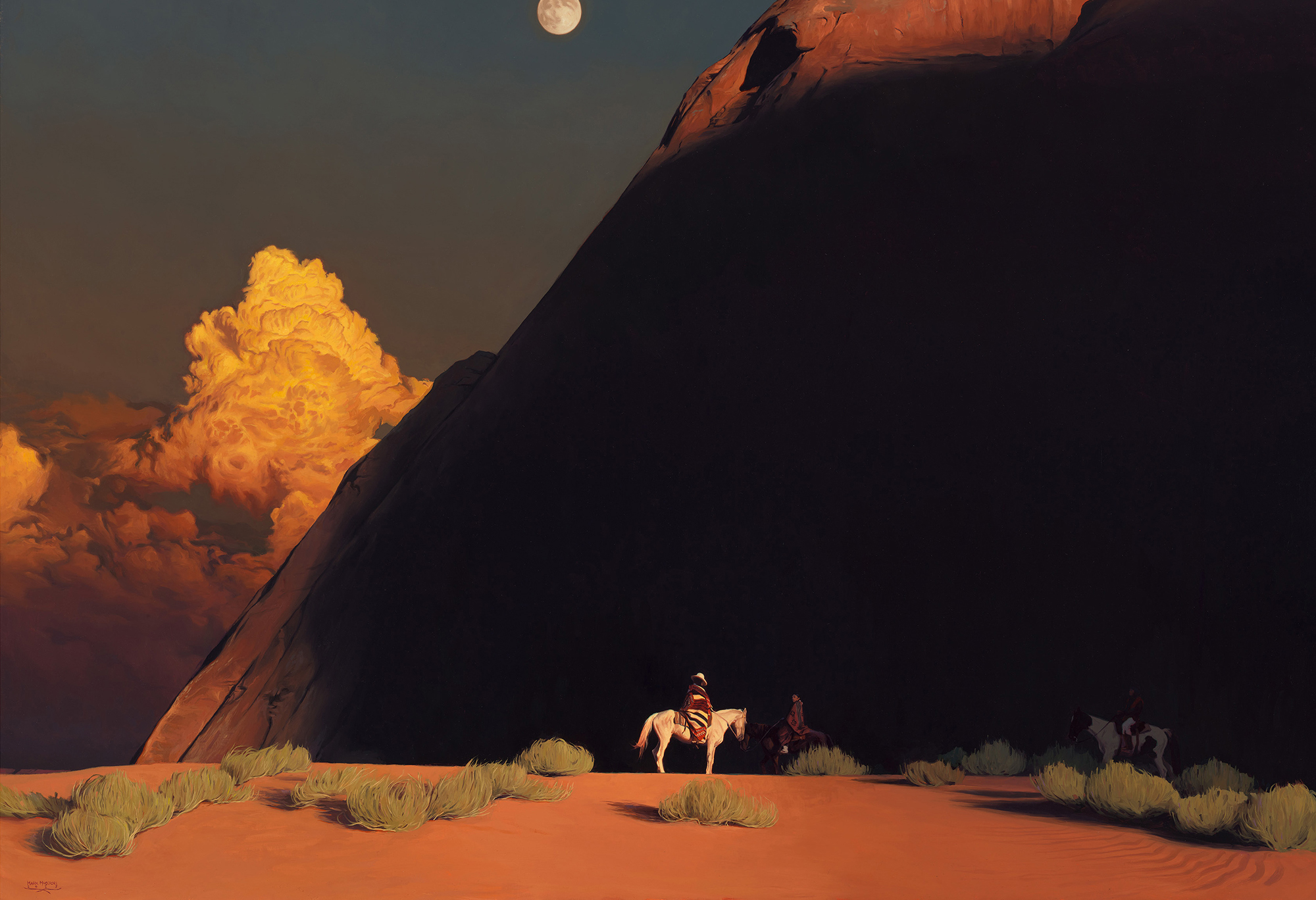“You use a mirror to see your face; you use art to see your soul.”
–George Bernard Shaw
What kind of art best depicts the American soul? For painter Kim Wiggins, there’s no question: It’s Western art. From the Hudson River School in the mid-1800s, to the Taos Society of Artists in the early 20th century, to the current New West movement — all have explored new ways to tell the old, old story of American exploration and discovery.
“Western art is the very soul of American society,” he said. Wiggins will be one of 37 artists featured at the Far West Show, at Preacher Gallery in Austin, September 12-13. The show is the creation of Mark Maggiori and his wife, Petecia Le Fawnhawk, both artists. He paints Western realism, and her art combines photography, sculpture, and fashion. Maggiori has a large following on Instagram, where he is helping to raise up a new generation of younger art collectors by showcasing the best in modern Western art.
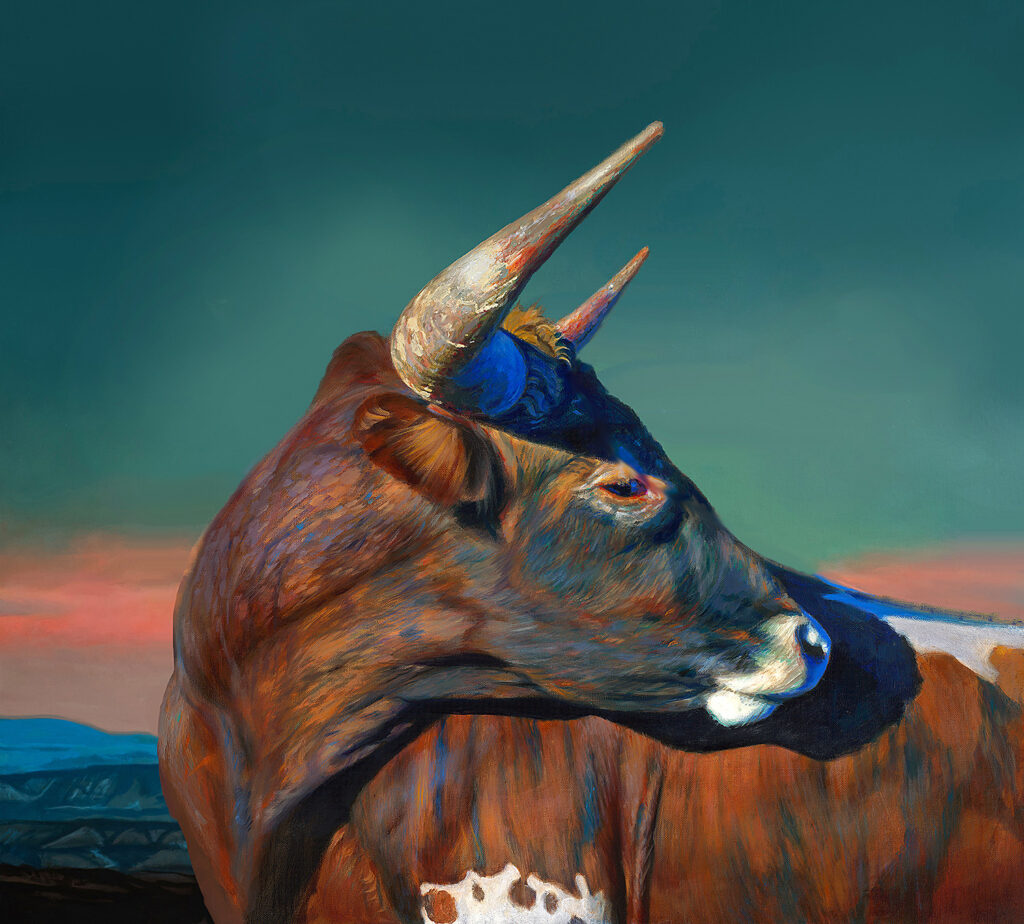
Maggiori, who is French, calls the show Far West because that’s how Europeans refer to the Western half of the United States. After visiting the American frontier as a teenager, the landscape got into his soul. He even has Far West tattoos on his arms.
This fall will be the first time the Far West Show comes to Texas. The move to Austin makes a lot of sense for Le Fawnhawk, who spent part of her childhood in the Texas capital. The first, smaller-scale Far West Show was held in Los Angeles in 2016. Last year it moved to New York City, which has more than 1,000 art galleries, but none focused on Western art. Maggiori’s goal was to unify the art world around the variety of innovative work from contemporary Western artists.
The already sold-out, collectors-only auction in Austin will take place opening night, and the show opens to the public the following day. Unlike other art gatherings, this one is artist driven.
“It’s a unique type of show because it’s put together by an artist, not a gallery or a museum,” said Wiggins. “Mark’s influence has skyrocketed on social media. There are new people out there looking at Western art for the first time. Every show Mark does is packed, filled with people new to Western art.”
Wiggins himself is a pioneer in the New West movement, represented by Legacy Gallery in both Scottsdale and Santa Fe. He describes himself as a “glass-full kind of guy.” Wiggins first worked in wildlife sculpture, then moved into painting. He paints with a heavy Impasto to appeal to a sense of touch. His bright colors can even stoke a sense of smell. “My uncle was an artist who used vibrant color, and my mouth would start watering because it reminded me of a candy store,” he said.
Wiggins grew up on a ranch in New Mexico and now lives in Roswell. He comes from a long line of storytellers and tells stories through his paintings, often incorporating symbolism and allegory. Although his style includes elements of modernism (he once had lunch with Georgia O’Keeffe), he respects and collects more traditionally realistic Western art. “The Western art world took a while to begin accepting Modernism as a pure art form. In the ’70s and early ’80s we were the early guys and had trouble getting into Western shows,” he said. After being given an opportunity participate in the Masters of the American West show at the Autry Museum, doors began to open for his work.
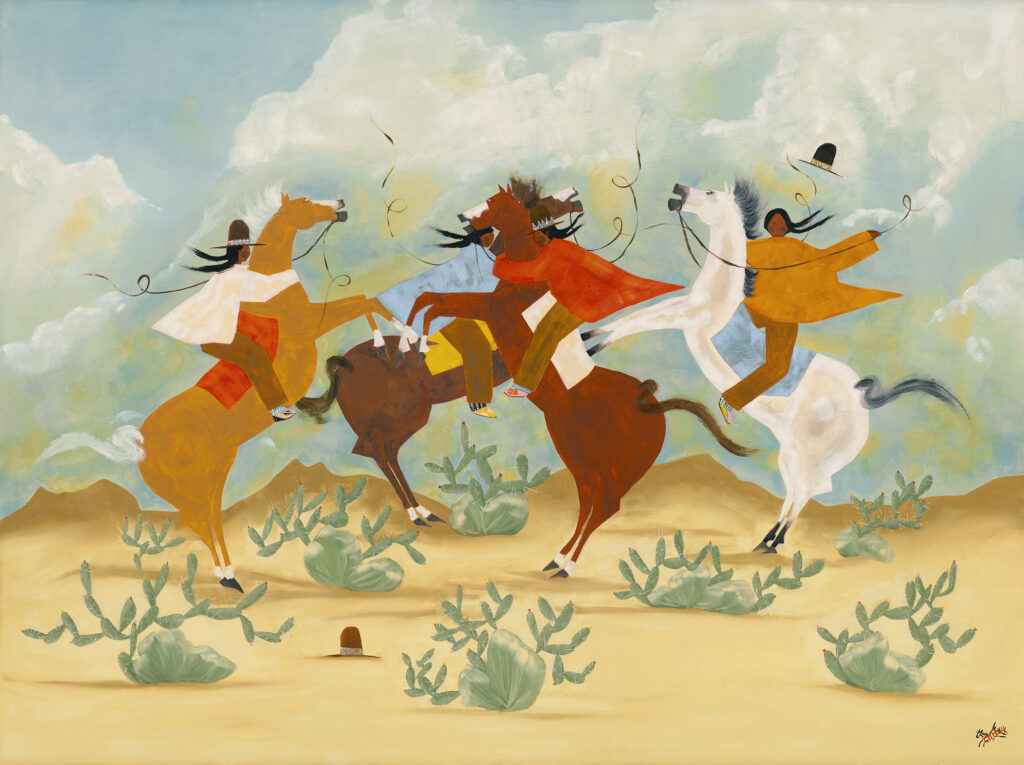
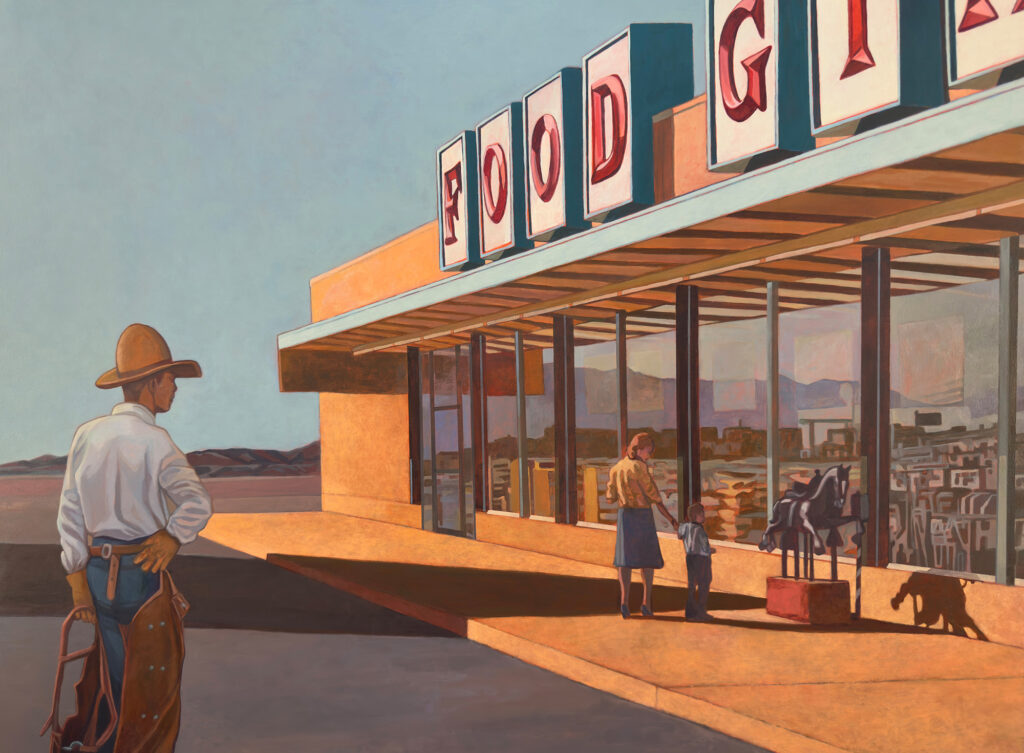
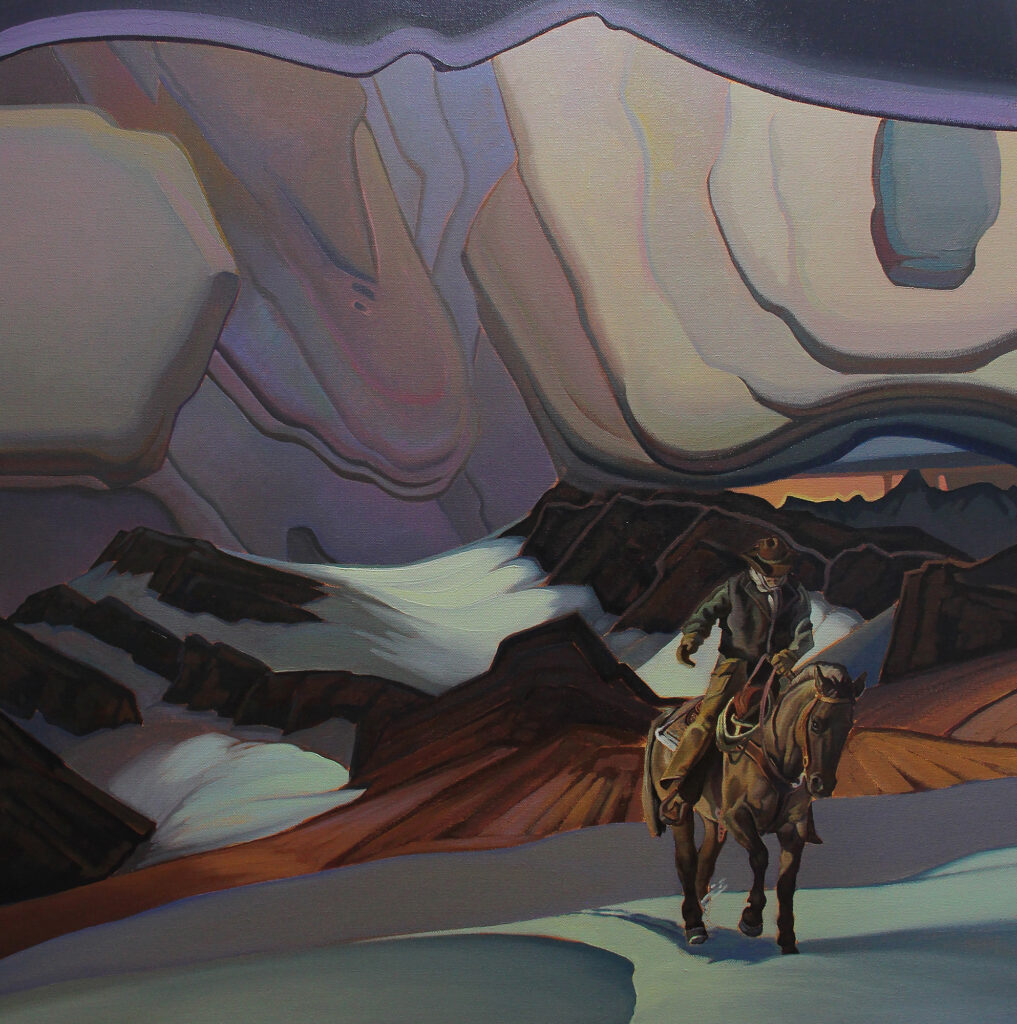
But the open door that meant the most to him was in Lubbock, when Wiggins found himself married, with a couple of kids, and unemployed. “I drove to Lubbock and started knocking on doors in the middle of summer. ‘Hi, I’m a young struggling artist from New Mexico.’ Slam! Slam! Slam!” he recalled. “Around 2 p.m. a lady opened the door and said, ‘Young man, you look like you could use a glass of iced tea.’ She bought one of my paintings for $500.” It was enough money to keep him going.
Wiggins’ art is bold and expressive. The people, the cattle, the horses, and sometimes even the buildings are alive with emotion. He represents one artistic style of the New West. Painter Lisa Gilley represents another. Her works are landscapes, rendered with more muted tones. Mark Maggiori saw Gilley’s artwork online and messaged her. “He said, ‘Who are you? What’s your deal? You remind me of the Canadian Seven.’ We started a little conversation, and he ended up inviting me into the show,” she said.
The Canada connection is not surprising, given that Gilley lives on a peninsula in Washington state. She’s represented by Woodside/Braseth Gallery, the oldest fine art gallery in Seattle. Her paintings portray the Pacific Northwest, which has not always been recognized as a vital part of Western art. “I’m trying to have a conversation with the landscape itself, from Alaska down to Texas,” she said. “I paint these places I love and have a deep conversation with.”
Gilley has done artist residencies at several national parks, including the North Rim of the Grand Canyon, Zion, and Capitol Reef. Each month-long trip included daily excursions. “I’d hike from 6 in the morning until noon, then paint until 11 at night,” she said.
Visitors to the Far West Show will see how Western art has changed and continues to evolve while remaining true to something uniquely American. Wiggins believes Western art will endure long into the future. “One of these days we’ll be like Rome or Greece or Egypt — our history in the past. Every society, what defines them primarily is found in the arts. For America, I don’t think it will be abstract art. You can look at an abstract painting and not know where it came from. Paris? Tokyo? Mexico City? LA?” he said. “Western art will define who we are as an American people.”


